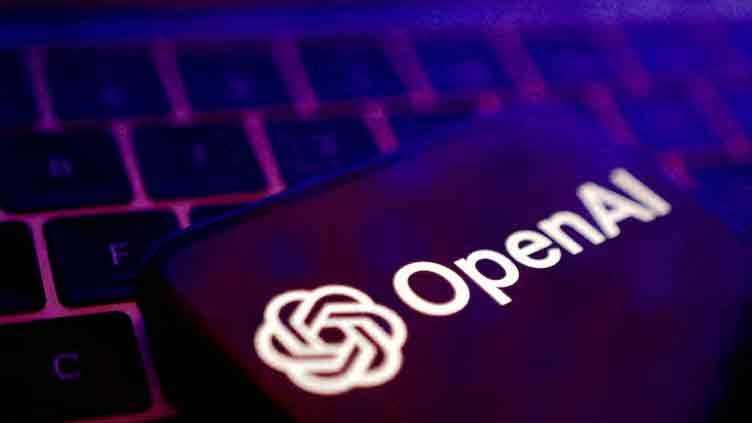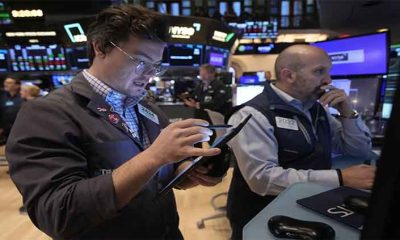Tech
Biden launches new US trade probe into legacy Chinese chips

The Biden administration on Monday announced a last-minute trade investigation into Chinese-made “legacy” semiconductors that could heap more US tariffs on chips from China that power everyday goods from autos to washing machines to telecoms gear.
The “Section 301” probe, launched just four weeks before President-elect Donald Trump takes office on Jan. 20, will be handed over to his administration in January for completion, Biden administration officials said.
The effort could offer Trump a ready avenue to begin imposing some of the hefty, 60% tariffs that he has threatened on Chinese imports.
Departing President Joe Biden has already imposed a 50% U.S. tariff on Chinese semiconductors that starts on Jan. 1. His administration has tightened export curbs on advanced AI and memory chips and chipmaking equipment to China and also recently increased tariff to 50% on Chinese solar wafers and polysilicon.
The U.S. Trade Representative’s office, which will conduct the new probe, said it is aimed at protecting American and other market-driven chip producers from China’s massive state-driven buildup of domestic chip supply.
U.S. Trade Representative Katherine Tai said that the trade agency has found evidence that Beijing is targeting the semiconductor industry for global domination, similar to its buildup in steel, aluminum, solar panels, electric vehicles and critical minerals.
“This is enabling its companies to rapidly expand capacity and to offer artificially lower priced chips that threaten to significantly harm and potentially eliminate their market-oriented competition,” she told reporters on a conference call.
Legacy chips use older, mature manufacturing processes and are found in a wide range of mass-market applications. They do not include advanced chips for use in artificial intelligence applications or sophisticated microprocessors.
The Biden administration will begin accepting public comments on the probe on Jan. 6 and has planned a public hearing for March 11-12, according to a Federal Register notice on the probe. It is unclear whether Trump’s choice to lead USTR, Jamieson Greer, a trade lawyer and former USTR chief during Trump’s first administration, will be confirmed by the U.S. Senate by then.
The probe is being conducted under Section 301 of the Trade Act of 1974, the same unfair trade practices statute that Trump invoked to impose tariffs of up to 25% on some $370 billion worth of Chinese imports in 2018 and 2019, triggering a nearly three-year trade war with Beijing.
If Trump takes up the probe, it needs to be completed within a year from initiation.
DOWNSTREAM GOODS PROBED
A Biden administration official said in addition to examining the impact of the imported chips themselves, the probe would also look at their incorporation into downstream components and end-use goods for critical industries including defense, automotive products and medical devices.
It also will target China’s production of silicon carbide substrates and wafers for semiconductor fabrication.
U.S. Commerce Secretary Gina Raimondo said her department’s research shows two-thirds of U.S. products using chips had Chinese legacy chips in them, and half of U.S. companies did not know the origin of their chips including some in the defense industry, findings that were “fairly alarming.”
After the COVID-19 pandemic disrupted the supply of semiconductors and temporarily halted production of autos and medical equipment, the U.S. has sought to build its own semiconductor supply chain with $52.7 billion in new subsidies for chip production, research and workforce development.
But Raimondo said China’s plans to build more than 60% of the world’s new legacy chip capacity over the next decade were discouraging investment elsewhere and constituted unfair competition.
It “undercuts our companies and makes the U.S. dependent on China for the chips that we use every day in so many things,” she told reporters.
Despite a bitter presidential campaign, one of the few areas of continuity between Biden’s and Trump’s administrations will be tariffs on China.
Biden kept in place all of the duties on Chinese imports imposed by Trump and added to them, including 100% duties on Chinese-made electric vehicles in an effort to keep them out of the U.S. market.
Tech
OpenAI, SoftBank each commit 19bn dollars to Stargate AI data center

OpenAI and Japanese conglomerate SoftBank (9984.T) will each commit $19 billion to fund Stargate, a joint venture to develop data centers for artificial intelligence in the U.S., the Information reported on Wednesday.
The ChatGPT maker will hold a 40% interest in Stargate, and would act as an extension of OpenAI, the report said, citing OpenAI CEO Sam Altman speaking to colleagues. His comments imply SoftBank would also have a 40% interest, the report added.
OpenAI and SoftBank did not immediately respond to Reuters’ requests for comment.
On Tuesday, U.S. President Donald Trump announced that OpenAI, SoftBank Group and Oracle (ORCL.N) will unveil Stargate and invest $500 billion over the next four years to help the United States stay ahead of China and other rivals in the global AI race.
Stargate will initially deploy $100 billion and the rest of the funding is expected over the next four years. The project is being led by SoftBank and OpenAI.
Tech
Taiwan’s HTC to sell part of XR unit to Google for 250mn dollars

Taiwan’s HTC (2498.TW) said on Thursday it will sell part of its unit for extended reality (XR) headsets and glasses to Google (GOOGL.O) for $250 million and transfer some of its employees to the U.S. company.
The transaction is expected to close in the first quarter of this year, HTC said.
The two companies will also explore further collaboration opportunities, HTC added.
Google said in a separate statement that the deal will accelerate the development of the Android XR platform and strengthen the ecosystem for headsets and glasses.
Lu Chia-te, HTC vice president and general counsel, told reporters the company had granted its intellectual property rights to Google as a non-exclusive license.
“Therefore, this is not a buyout nor an exclusive licence. In the future, HTC will still retain the ability to use, utilise, and even further develop it without any restrictions,” he said.
Tech
Microsoft’s LinkedIn sued for disclosing customer information to train AI models

Microsoft’s (MSFT.O) LinkedIn has been sued by Premium customers who said the business-focused social media platform disclosed their private messages to third parties without permission to train generative artificial intelligence models.
According to a proposed class action filed on Tuesday night on behalf of millions of LinkedIn Premium customers, LinkedIn quietly introduced a privacy setting last August that let users enable or disable the sharing of their personal data.
Customers said LinkedIn then discreetly updated its privacy policy on Sept. 18 to say data could be used to train AI models, and in a “frequently asked questions” hyperlink said opting out “does not affect training that has already taken place.”
This attempt to “cover its tracks” suggests LinkedIn was fully aware it violated customers’ privacy and its promise to use personal data only to support and improve its platform, in order to minimize public scrutiny and legal fallout, the complaint said.
The lawsuit was filed in the San Jose, California, federal court on behalf of LinkedIn Premium customers who sent or received InMail messages, and whose private information was disclosed to third parties for AI training before Sept. 18.
It seeks unspecified damages for breach of contract and violations of California’s unfair competition law, and $1,000 per person for violations of the federal Stored Communications Act.
A lawyer for Prince Harry on Wednesday said the Duke of Sussex had reached a settlement with Rupert Murdoch’s news conglomerate.
LinkedIn said in a statement: “These are false claims with no merit.”
A lawyer for the plaintiffs had no immediate additional comment.
The lawsuit was filed several hours after U.S. President Donald Trump announced a joint venture among Microsoft-backed OpenAI, Oracle (ORCL.N) and SoftBank (9984.T), with a potential $500 billion of investment, to build AI infrastructure in the United States.
-

 Business2 months ago
Business2 months agoAuto industry’s shift toward EVs is expected to go on despite Trump threat to kill tax credits
-

 Entertainment3 months ago
Entertainment3 months agoBeyoncé leads the 2025 Grammy noms, becoming the most nominated artist in the show’s history
-

 pakistan3 months ago
pakistan3 months agoPM Shehbaz terms promotion of foreign investment as top priority
-

 Business3 months ago
Business3 months agoWall Street cruises toward the close of its best week in a year
-

 World2 months ago
World2 months agoSix Israeli troops killed, deadly strikes in Lebanon
-

 Entertainment2 months ago
Entertainment2 months agoMovie Review: ‘Red One’ tries to supersize the Christmas movie
-

 Sports1 month ago
Sports1 month agoSouthampton set to sign Juric as new manager
-

 Business2 months ago
Business2 months agoWall Street gains ground as it notches a winning week and another Dow record















